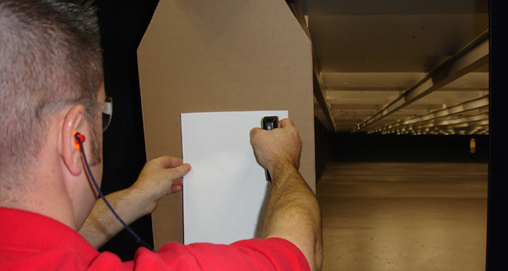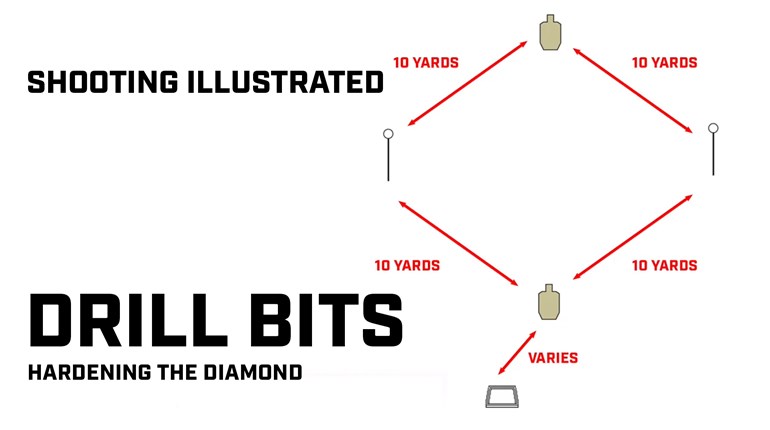
Remember when you were a new shooter; going to the range for the first time and staring open mouthed at the guy a few lanes over? You may recall the guy who drew his gun with the grace, smoothness and speed of James Bond, seemingly never to shoot a round anywhere except dead center in the bullseye. You probably felt envy and a deep desire to mimic his abilities. Nervously, you started your practice session, and most likely went home happy with a target looking like it was peppered with a shotgun blast.
Now, how are your shooting abilities today? As we grow as shooters, we pick up tips and advice on shooting drills or ways to practice from our friends, family members or any number of others who are more than willing to add their two cents for helping us improve. But, there are as many different opinions for proper drills as there are shooters themselves. It is up to each one of us to determine exactly what drills to utilize in order to attain our highest potential. By this I mean, if you ask a hundred accomplished shooters "What are the best techniques I should employ?" you'll get 100 different answers.
Now, use common sense. If you watch a great shooter run through his practice session, ask yourself, "What's he's doing?" Break it down further—see the whole picture from the ground up. First things first; the stance. Notice how his feet are shoulder-width apart, with the strong-side foot about 4 inches back and a slight bend at the knees. Seat the strong hand grip while the gun is still in the holster, then draw, lifting the gun up while simultaneously rotating the muzzle down range and molding the support hand, gun and strong hand together. Extend the gun forward and up, so the sights interrupt the line of vision and engage the intended target.
You already know all this, so why do your targets look like some kind of strange noodle strainer and not the clean cloverleaf patterns they should be? The answers, my friend, are not blowing in the wind. It's the way you practice.
In my 20-plus years working with firearms, I've had the pleasure of meeting, working and shooting with some of the best shooters around. Lucky for me, I have picked up some pretty cool, but simple drills that have helped me not only become a better shooter, but also a better instructor.
If at all possible, it's always best to shoot with a partner. Doing this helps you to focus on the task at hand, and it also creates a level of competition between you and your buddy. Don't worry if you go to the range by yourself. People are always willing to join you if just ask.
When shooting with a partner one of the best and simplest drills is the "Rabbit in the Hole." Here's how it goes. First, hang a clean, blank sheet of paper at eye level. Then, Shooter No. 1 attempts to shoot one round in the center of the paper. Shooter #2 very simply attempts to shoot that same hole. This drill not only makes one completely focus on their sights, but also helps with trigger press and follow-through. If you are fortunate enough to be in a range that allows the use of holsters, this drill will increase your draw speed and sight acquisition on the small target (aim small, miss small) as well. If you incorporate this simple drill in your practice session, I promise you will see a positive difference in your shot grouping in no time.
Now the next little bit of food for thought is something I think you are all familiar with. Two of the very best handgun shooters I know have two very different methods of standard practice. The first is a Grand Master shooter and will happily tell you that he sometimes practices until he's ankle deep in brass. That's old school and it is fine if you can afford it. The second person is a Master Class shooter and almost never fires a live round, but relies almost solely on dry-fire practice every day to hone his skills.
The point I'm trying to make is shooting drills can be as simplistic or complex as you choose to make them to build your overall skills. One thing holds true no matter what: You need to put the time in each and every day. You're only going to get out of it what you put into it.




































